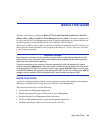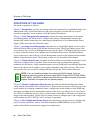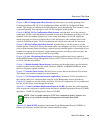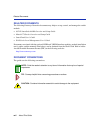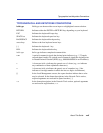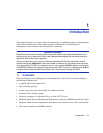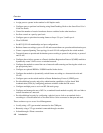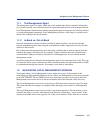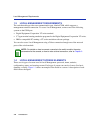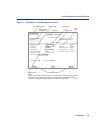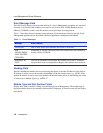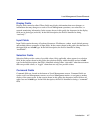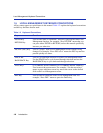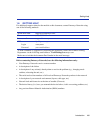
Navigating Local Management Screens
Introduction 1-3
1.1.1 The Management Agent
The management agent is an entity within the switch module that collects statistical information
(e.g., frames received, errors detected) about the operational performance of the managed network.
Local Management communicates with the management agent for the purpose of viewing statistics
or issuing management commands. Local Management provides a wide range of screens used to
monitor and configure the switch module.
1.1.2 In-Band vs. Out-of-Band
Network management systems are often classified as either in-band or out-of-band. In-band
network management passes data along the same medium (cables, frequencies) used by all other
stations on the network.
Out-of-band network management passes data along a medium that is entirely separate from the
common data carrier of the network, for example, a cable connection between a terminal and a
switch module COM port. Enterasys Networks Local Management is an out-of-band network
management system.
A module connected out-of-band to the management agent is not connected to the LAN. This type
of connection allows you to communicate with a network module even when that module is unable
to communicate through the network, for example, at the time of installation.
1.2 NAVIGATING LOCAL MANAGEMENT SCREENS
To navigate within a Local Management screen, use the arrow keys of the terminal or the
workstation providing terminal emulation services. The Local Management screen cursor responds
to the LEFT, RIGHT, UP, and DOWN arrow keys. Each time you press an arrow key, the Local
Management screen cursor moves to the next available field in the direction of the arrow key.
The Local Management screen cursor only moves to fields that can be selected or used for input.
This means that the cursor jumps over display fields and empty lines on the Local Management
screen.
The Local Management screen cursor provides wrap-around operation. This means that a cursor
located at the edge of a screen, when moved in the direction of that edge, “wraps around” to the
outermost selectable item on the opposite side of the screen which is on the same line or column.



